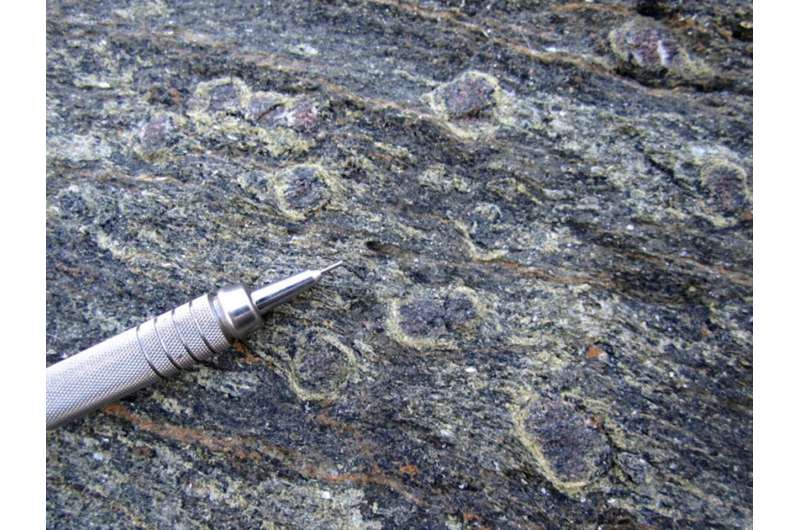Mineral dating reveals new clues about important tectonic process
,

"In a broad sense this work gives us a better understanding of why some subduction zones fail while others set up as long-term, steady-state systems," said Joshua Garber, assistant research professor of geosciences at Penn State.
Subduction occurs when two tectonic plates collide, and one is forced under the other. Where oceanic and continental plates meet, the denser oceanic plates normally subduct and descend into the mantle, the scientists said.
Occasionally, oceanic plates move on top, or obduct, forcing continental plates down toward the mantle instead. But the buoyancy of the continental crust can cause the subduction to fail, carrying the material back toward the surface along with slabs of oceanic crust and upper mantle called ophiolites, the scientists said.
"The Samail Ophiolite on the Arabian Peninsula is one of the largest and best exposed examples on the surface of the Earth," Garber said. "It's one of the best studied, but there have been disagreements about how and when the subduction occurred."
The team, led by Penn State scientists, investigated the timing of the subduction using nearby rocks from the Saih Hatat formation in Oman, which was subducted under the Samail Ophiolite, according to the researchers.
Heat and pressure from the process created garnet, zircon and rutile crystals in a key suite of highly metamorphosed rocks that saw the most extreme conditions during subduction. Using state-of-the-art dating techniques, including measuring isotopic dates and trace elements, the scientists determined these minerals all formed at roughly the same time 81 to 77 million years ago.
"What's interesting about this is that they were all dated by slightly different methods, but they all gave us essentially the same results," Garber said. "This tells us that all the minerals in the rocks have a coherent story. They all record the same metamorphic episode at the same time."
The findings, published in the Journal of Geophysical Research: Solid Earth, dispute previous results that estimated the event began 110 million years ago and happened in separate phases, the scientists said.
"What our findings suggest is that this continental material was not subducted deep into the mantle a long time before the ophiolite formed as previously thought," Garber said. "Our data supports a nice sequence of events that happened in a tighter window and that makes more geological sense."
The scientists said the subduction of the continental margin occurred after the obduction of the Samail Ophiolite. The most deeply subducted continental material was likely anchored to more dense rocks, and when this anchor broke, the buoyant continental rocks exhumed, first quickly, and then slowly during a lengthy residence in the lower to middle crust. It eventually become exposed in tectonic windows through the ophiolite.
"Subduction is a really big part of plate tectonics on Earth," Garber said. "It's the major recycling mechanism for surface material to the deeper mantle, so understanding how they eventually evolve into stable subduction zones or how they end very quickly is of great interest. I think here we've nailed down why this subduction zone ended and the sequence of events that came with it."
More information: Joshua M. Garber et al, Dating Continental Subduction Beneath the Samail Ophiolite: Garnet, Zircon, and Rutile Petrochronology of the As Sifah Eclogites, NE Oman, Journal of Geophysical Research: Solid Earth (2021). DOI: 10.1029/2021JB022715
Journal information: Journal of Geophysical Research: Solid Earth
Provided by Pennsylvania State University





















